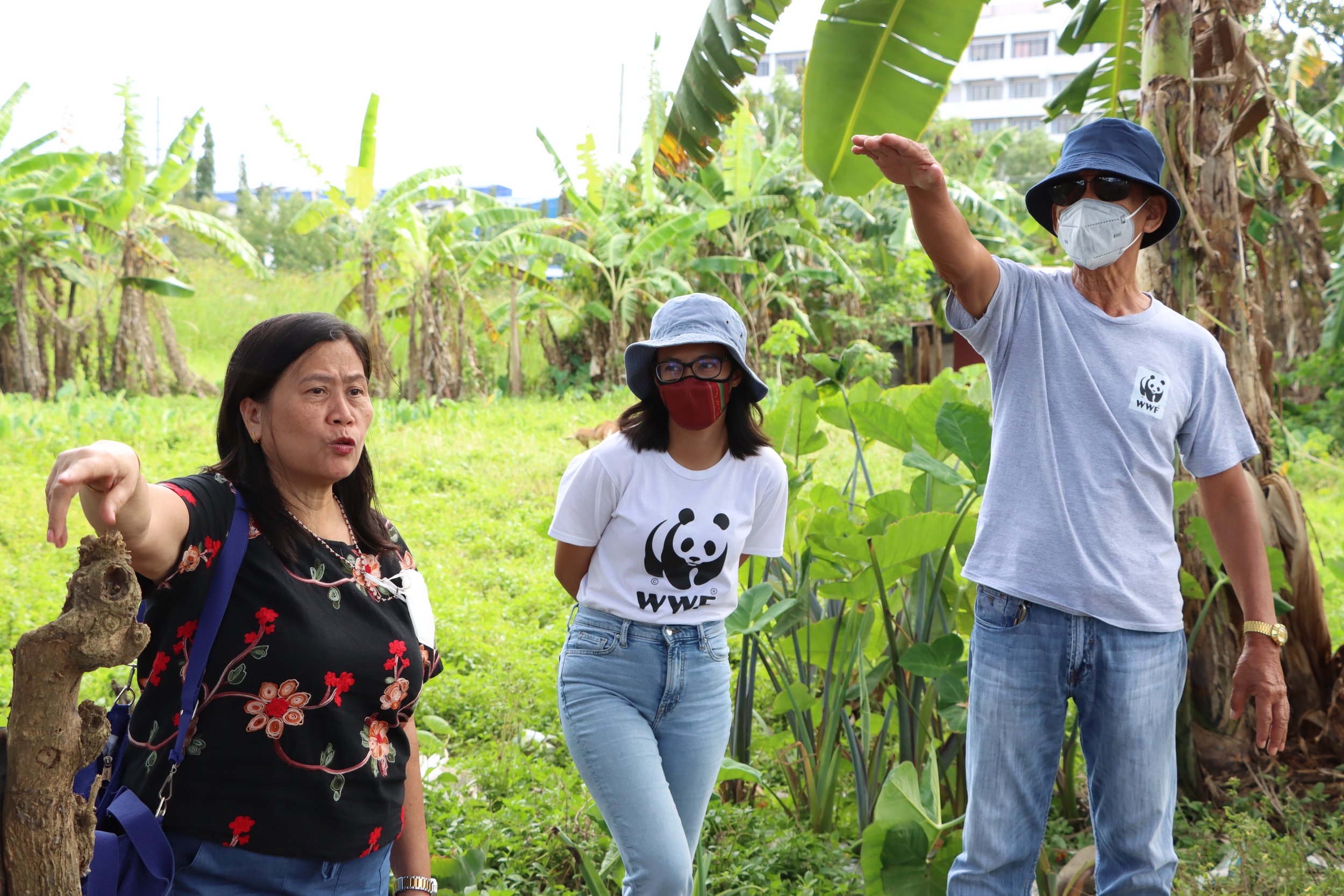Uniting Against Plastic: Community Action in the Philippines
Councilor and lifelong resident of Barangay Calicanto, Eduardo Acorda, inspects the site where the materials recovery facility will be built.
In recent years, Barangay Calicanto in Batangas City, Philippines, has faced significant challenges with waste management.
As a result, piles of trash illegally accumulate in the surrounding environment and creeks leading to the city port, posing clear environmental hazards for people and nature.
Barangay Councilor Eduardo Acorda, a lifelong resident of Calicanto, describes his beloved home as a "catch basin" for junk flowing in from nearby neighborhoods.
“One of our perennial problems is waste, and it worsened during the COVID-19 pandemic,” Acorda says.
WWF-Philippines Batangas Project Coordinator Belle Tapia (middle) works with Barangay Calicanto Councilors Marites Harrell (left) and Eduardo Acorda (right) to determine the site where the materials recovery facility will be built.
Understanding the Problem
Calicanto is a barangay, which in the Philippines is a small administrative district similar to a neighborhood or village, and home to around 11,000 people in 2,500 households and almost 150 non-households, such as malls and restaurants.
A recent study by the World Wide Fund for Nature (WWF) Philippines and consulting firm AMH Philippines, found that the households and establishments within the barangay produce 4,783 kilograms of waste daily or over 1.7 million kilograms of waste per year.
The study also noted potential causes for leakage into the environment, such as the lack of waste containers with lids, leading to unsealed garbage being scattered by stray animals.
Mismanaged plastic waste can have severe consequences for both wildlife and humans, including contamination of water, soil, and air. Blocked water drains can lead to flooding and standing waters, creating dangerous conditions and vectors for deadly infectious diseases.
Collective action and local collaboration is key for tackling the waste management challenges.
A Community-Driven Solution
The lack of facilities to divert the waste is one of the challenges that Barangay Calicanto is facing in its solid waste management system. This issue was discussed during a design thinking workshop, a problem-solving approach that encourages collaboration and creativity, facilitated by WWF-Philippines.
Recognizing these challenges, the residents are now hopeful that a new materials recovery facility (MRF) will help reduce plastic pollution in their small community.
This was one of the solutions the community came up with during the design thinking session. The facility aims to improve the waste collection program and also set a benchmark for solid waste management in other barangays.
“What we want for our barangay is to have a proper facility where we can place our garbage since waste is very destructive,” says Acorda, who also participated in the workshop.
One of Barangay Calicanto’s three creeks is located right beside the site where the new materials recovery facility will be built.
One of the creeks in Barangay Calicanto that are supposed to drain the area of floods during bad weather, but often get clogged with waste and create dangerous conditions
Empowering Waste Solutions
Philippine law requires every barangay to have an MRF with a solid waste sorting station, drop-off center, composting facility, and recycling facility. But only 30% nationwide have one. The rest, including Barangay Calicanto, do not have their own, often due to lack of funds or land.
This is now about to change.
Thanks to the WWF-Philippines project "Clean Ports, Clean Oceans: Improving Port Waste Management in the Philippines," funded by the Grieg Foundation and implemented in partnership with the Grieg Group, Barangay Calicanto will receive the support they need to establish an MRF.
Czarina Constantino-Panopio, Program Manager of WWF-Philippines' No Plastics In Nature Initiative, praises the community for their commitment and willingness to find solutions.
“We selected Barangay Calicanto because we saw their dedication to address plastic pollution. This was further strengthened when we did the design thinking workshop, where they were active and ready to do what it takes to solve the problems,” she says.
The site where the Barangay Calicanto materials recovery facility will be constructed.
Towards a Cleaner, Greener future
Councilor Acorda is hopeful that the MRF, set to be functional by summer 2023, will motivate residents to gather waste and use the facility, contributing to a cleaner, greener future for people and nature.
"I expect to see all recyclable garbage in the barangay properly managed, and our community members inspired to collect waste and bring it to the facility," says Acorda.






